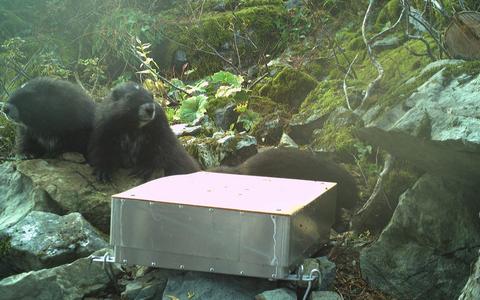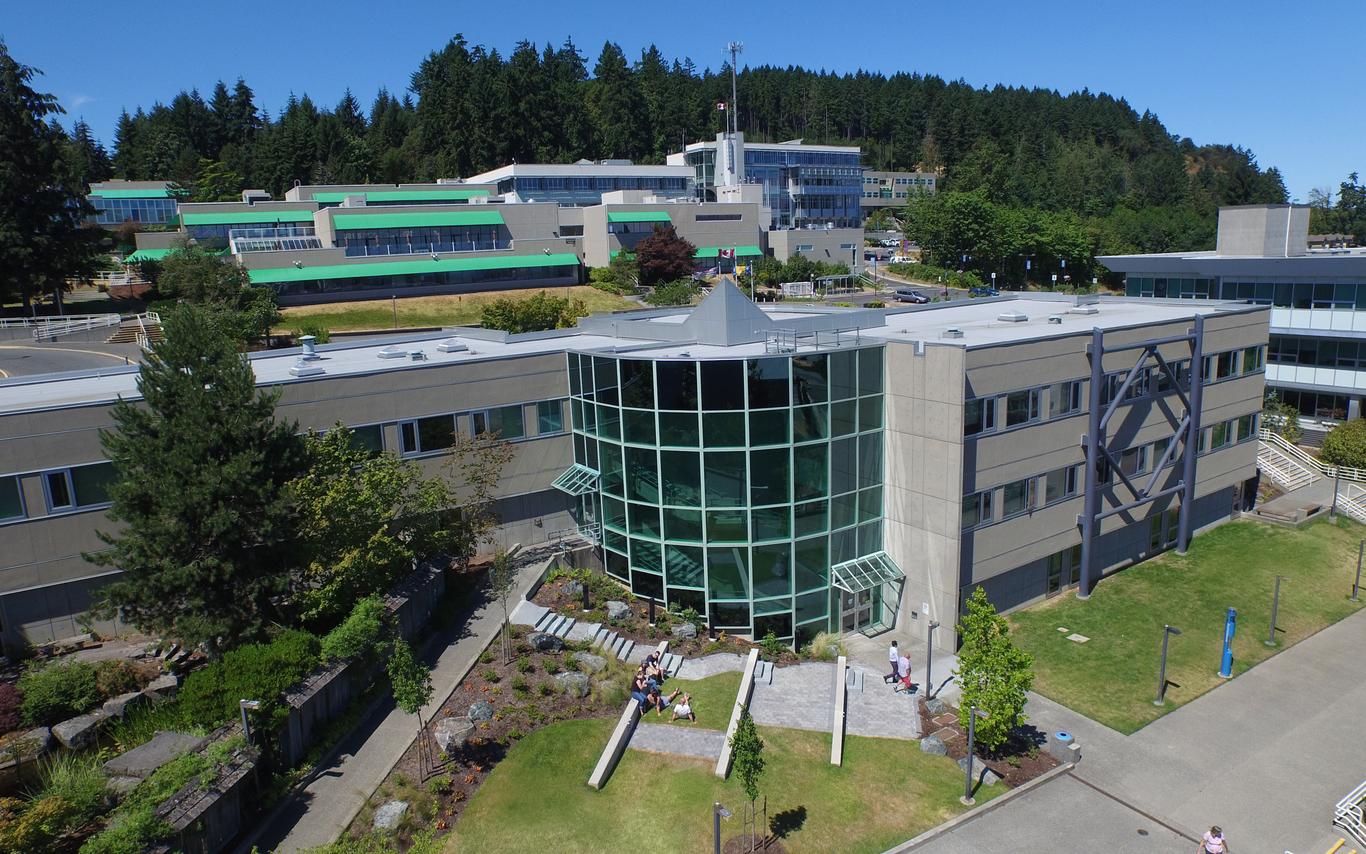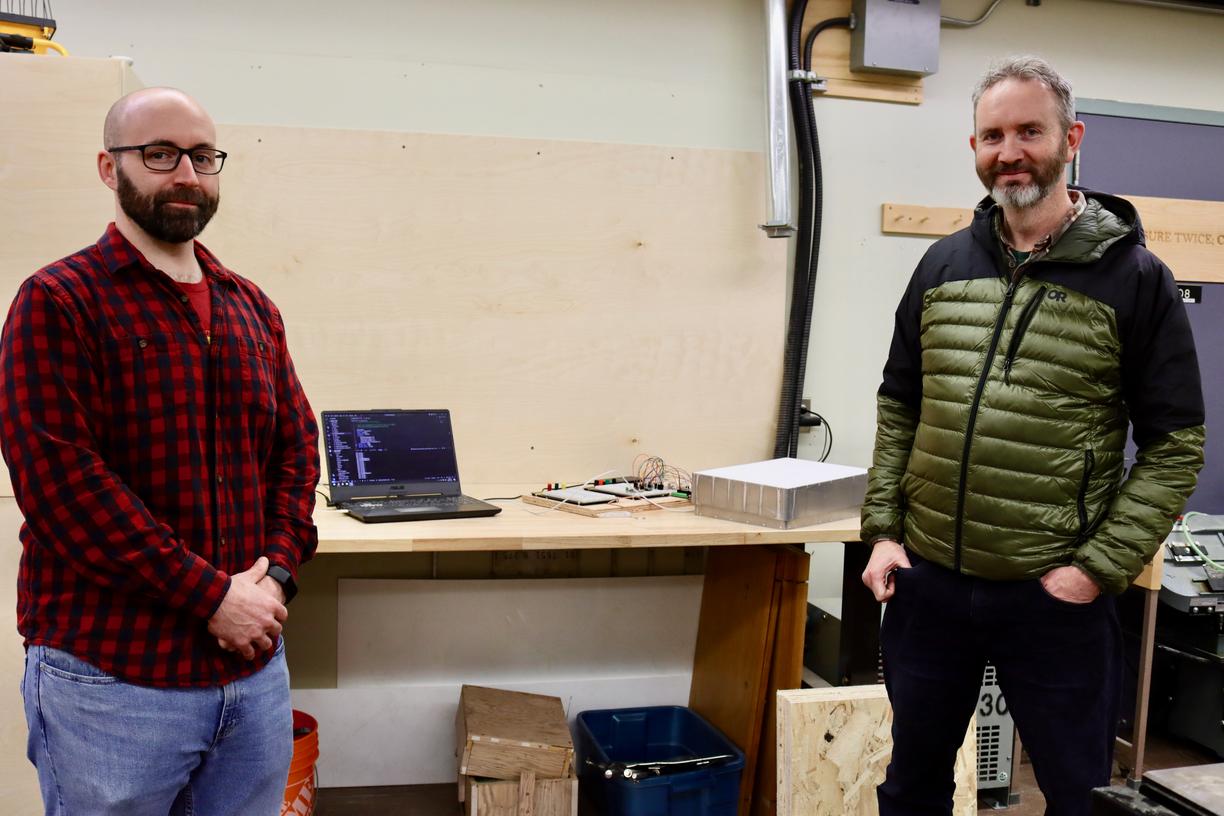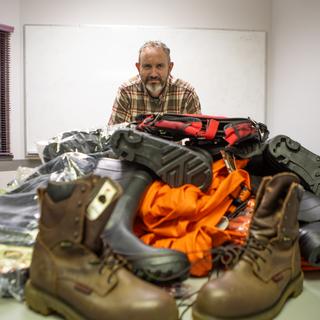Engineering Technician Devin Ayotte and Resource Management and Protection Technician Michael Lester stand in front of remote weigh scale testing device.
The smart device will help researchers determine if supplemental feeding improves the reproductive health of marmots.
Two Vancouver Island University (VIU) Technicians, working in collaboration with the Wilder Institute, have spent almost two years building an electronic weigh scale to provide valuable research data on marmots in the wild.
The Vancouver Island Marmot Recovery Foundation started releasing captive-born marmots into the wild in 2003 to help recover the critically endangered Vancouver Island marmot. The population has increased to at least 300 individuals, up from only 30 when the species was threatened with extinction. The foundation leads the reintroduction of marmots born under their care, as well as those born at the Wilder Institute and Toronto Zoo, into the mountain habitats on Vancouver Island.
Engineering Technician Devin Ayotte and Resource Management and Protection Technician Michael Lester are working on a tool to help researchers investigate how body weight affects survival during hibernation and the number of pups female marmots wean in the spring.
“One of the things we don't know is how much body condition affects reproduction,” said Lester. “The average number of pups a female has in a litter might be three per year, but she might have four or five if she's in optimal body condition.”
In partnership with the Marmot Recovery Foundation, the Wilder Institute is researching the benefits of providing supplemental food to wild marmots, in the form of calorie-dense biscuits approved by wildlife veterinarians. The goal is to determine if this additional food bolsters marmot body weights and thus their survival or reproduction.
“We put the biscuits in a tube adjacent to a hibernaculum, their winter shelter, so when the marmots emerge, they have easy access to nutritious food, which can be scarce for several reasons,” said Lester.
The challenge for researchers determining if the extra food is making a difference is trapping and weighing the marmots in the wild at regular intervals. Collecting body weight data involves long hikes into remote areas and carefully setting traps on steep slopes, limiting sampling to only a few marmots per day. To overcome these challenges, the Wilder Institute and VIU began developing a remote data logging weigh scale in 2022.
Ayotte was able to modify the weigh scale Lester had built to add a way to identify the marmots in addition to weighing the mammals. He also added a way to store the data remotely for collection by field researchers. The battery-operated scale can record the radio frequency identification tags the animals wear.

It took several attempts to come up with a workable unit. The scale has to be robust enough to survive the elements, yet light enough to be transported up the mountain in a researcher’s backpack.
“The tenth prototype is built out of aluminum and plastic,” said Ayotte. “It’s lightweight and strong, and we were able to cover the top with wood to make it a bit more palatable to the marmots because they didn't seem to like the bright, shiny surfaces.”
Ayotte installed a tracking device within the scale to record information from the tag implanted between the shoulder blades of the marmots. The tags respond to an electrical signal sent from the receivers and have a range of about six inches.
“The challenge for us is to attach a small antenna without adding anything extra on top of the weigh scale, be within range to read the tag through the marmot’s body when it sits on top, record the data to an SD memory card within the unit and meet animal-safe legal requirements,” said Ayotte.
The units will be deployed in areas where there are supplemental feeding tubes and where there aren’t any.
“Understanding how body condition influences survival and reproduction is an important piece of the puzzle in Vancouver Island marmot conservation,” said Dr. Brenna Stanford, Conservation Program Manager at the Wilder Institute. “This innovative scale provides a non-invasive way to gather valuable data, helping us assess whether supplemental feeding is improving body condition and, ultimately, supporting population growth. The new scale can also help us to better understand if and how marmot body condition varies among different habitats. By combining technology with conservation science, we’re gaining new insights that could enhance recovery efforts for this endangered species.”
Lester said marmots are an integral part of the alpine ecosystem.
“Their demise is probably almost certainly because of human-caused effects. It’s only right that we should be part of the recovery effort,” he said. “Many species are going extinct all the time, and this is one where we can have some real success.”
“You don’t often get the opportunity to do something this meaningful with the technology,” said Ayotte. “We spend a lot of time teaching and using these little microcontrollers and sensors in toys and building robots. To be able to apply it to sustainability and conservation is awesome.”
-30-
Media Contacts:
Annette Lucas, Communications Officer, Vancouver Island University
P: 250.618.7296 | E: annette.lucas@viu.ca | X: @VIUniversity
Alison Archambault
Director, Brand & Engagement
403.232.7766 | 403.919.9482 | mediarelations@wilderinstitute.org
About the Wilder Institute:
The Wilder Institute is a global authority on wildlife conservation, reintroducing threatened species to the wild and empowering communities to conserve their own natural resources to positively impact both nature and communities. The staff and volunteers of Wilder Institute are passionate about building a future where people and wildlife thrive, together. Using innovative science, our team is working to save threatened and endangered species and return them to the wild, where our planet needs them to be. We proudly operate the Archibald Biodiversity Centre, Canada’s largest conservation breeding and research facility. Our conservation expertise is in conservation breeding and community conservation, where we collaborate with community members to positively impact both nature and local communities. Learn more at WilderInstitute.org to join us in making the world a wilder place.



